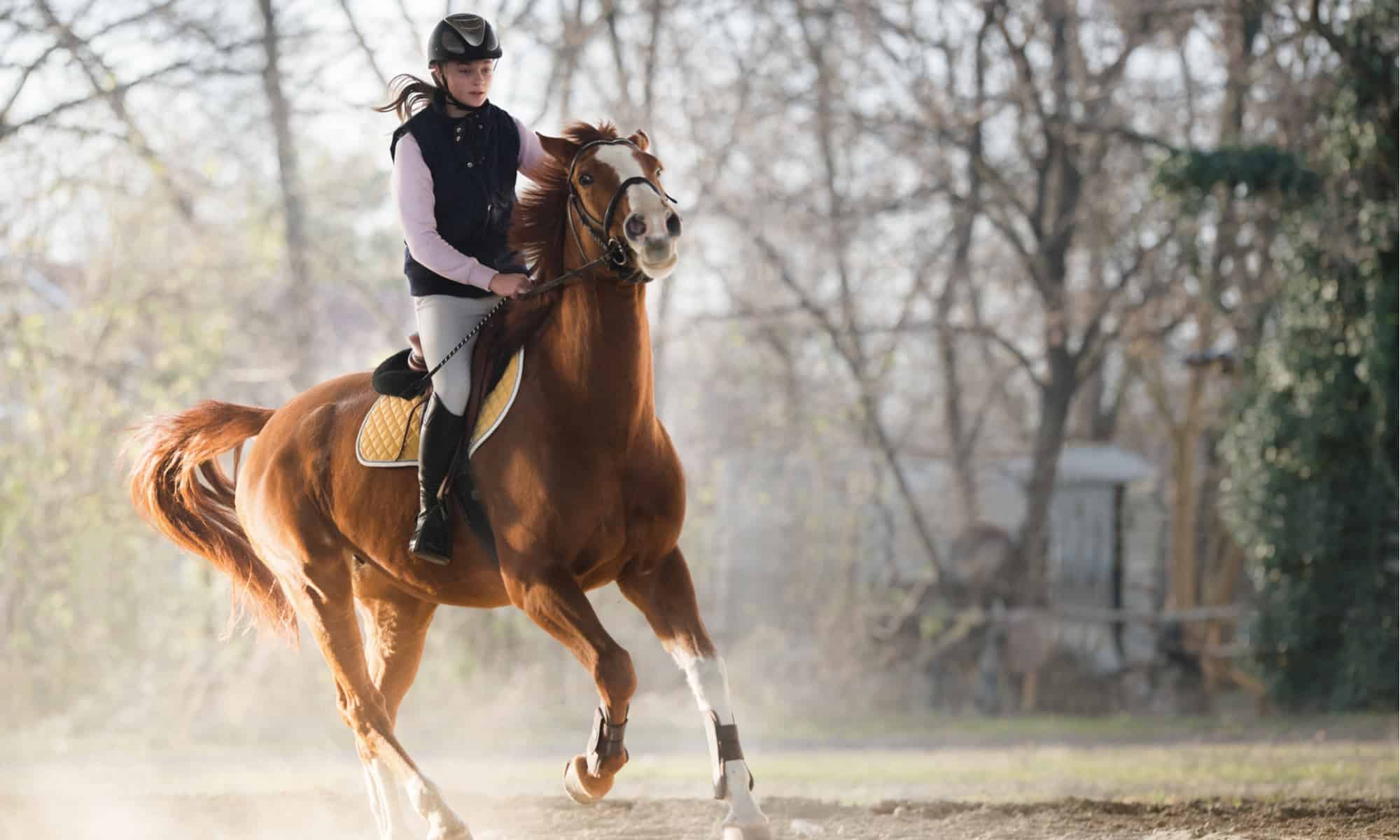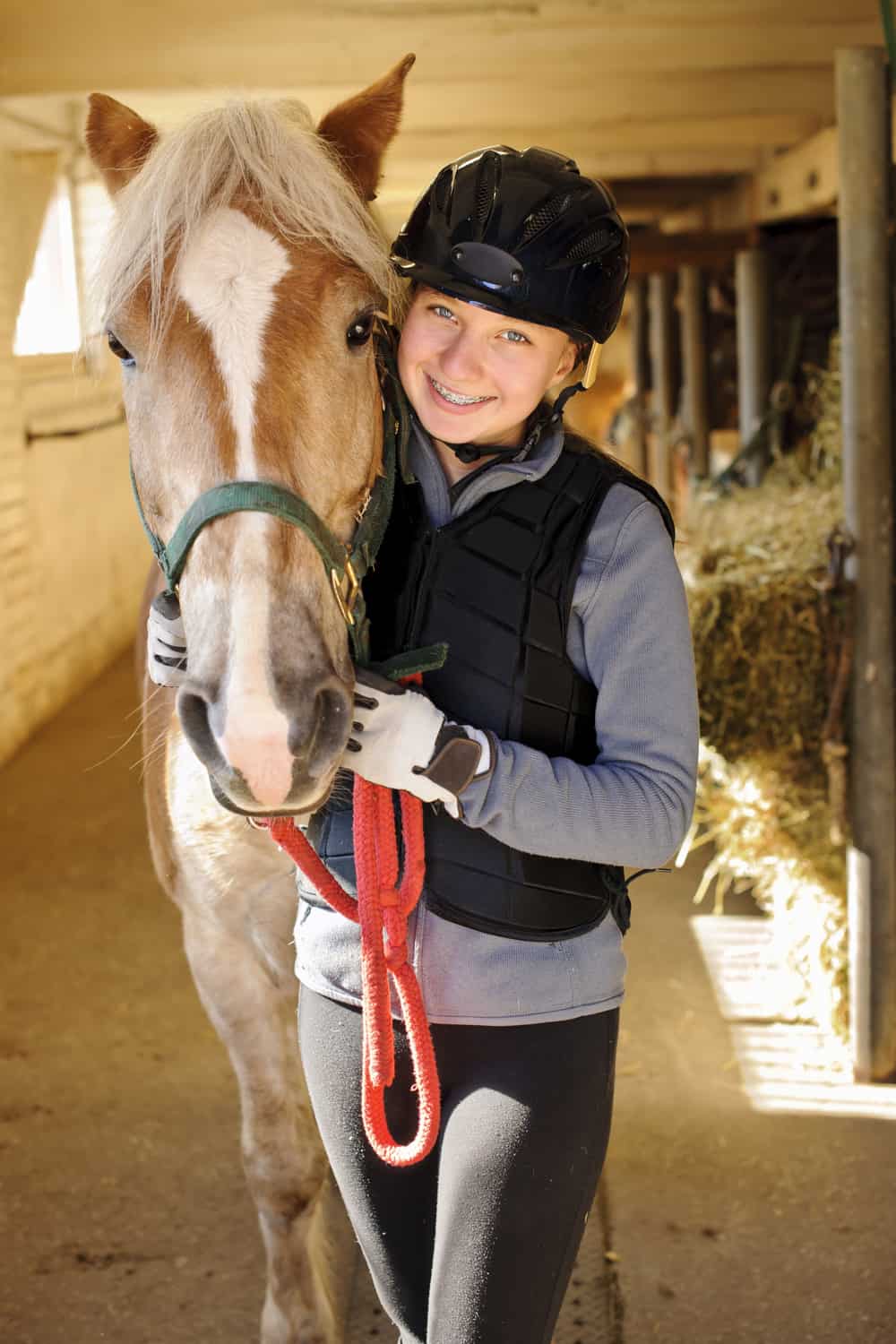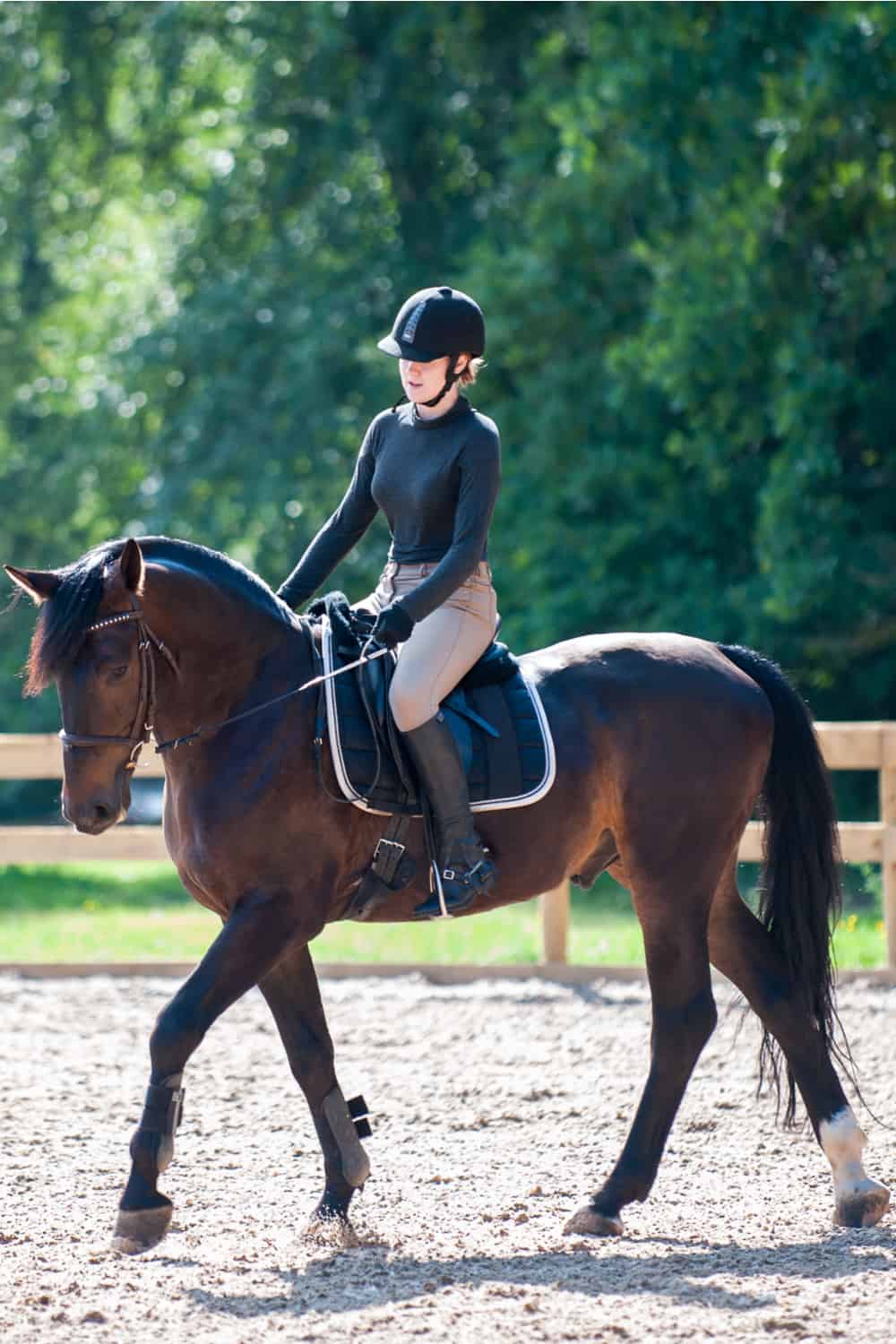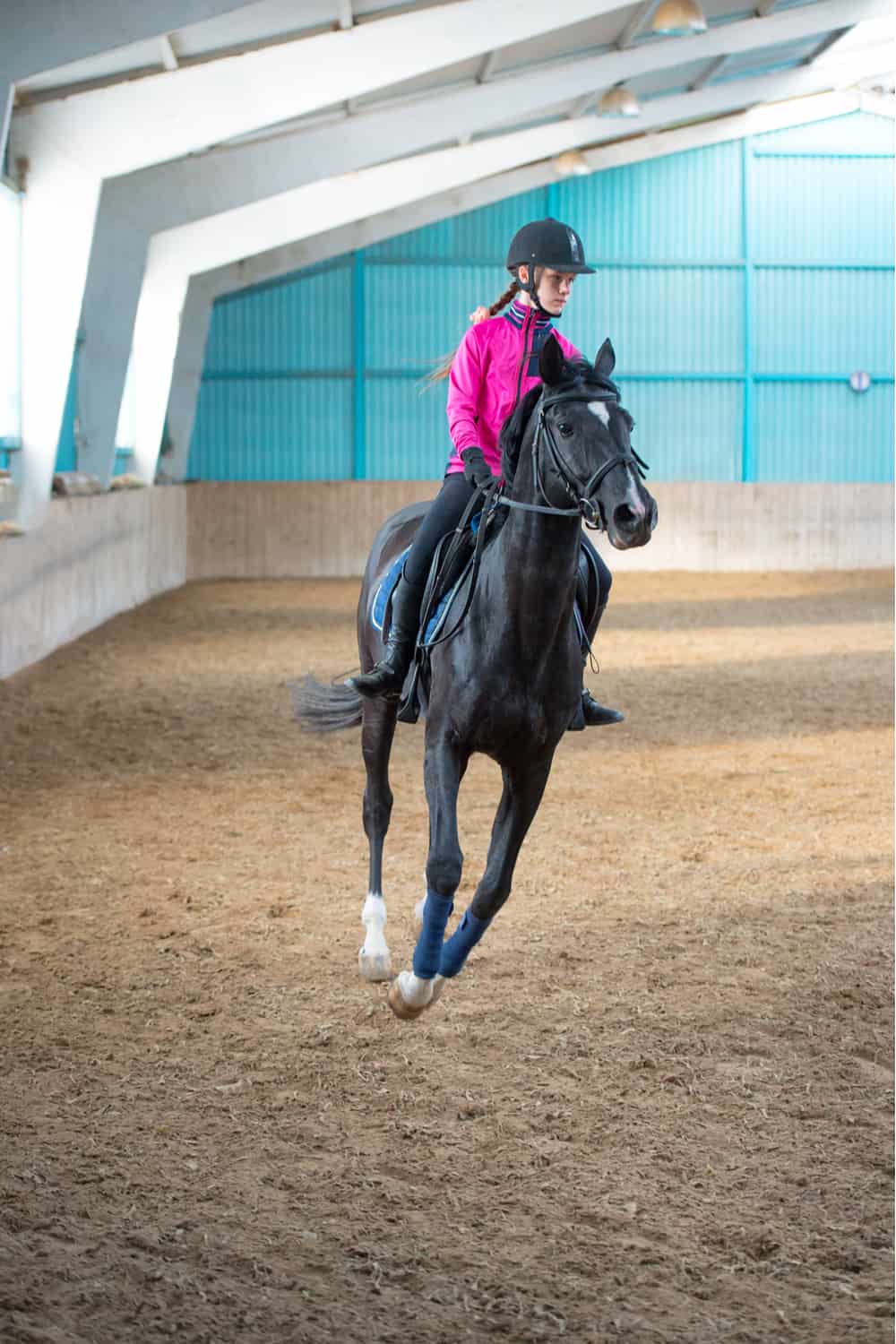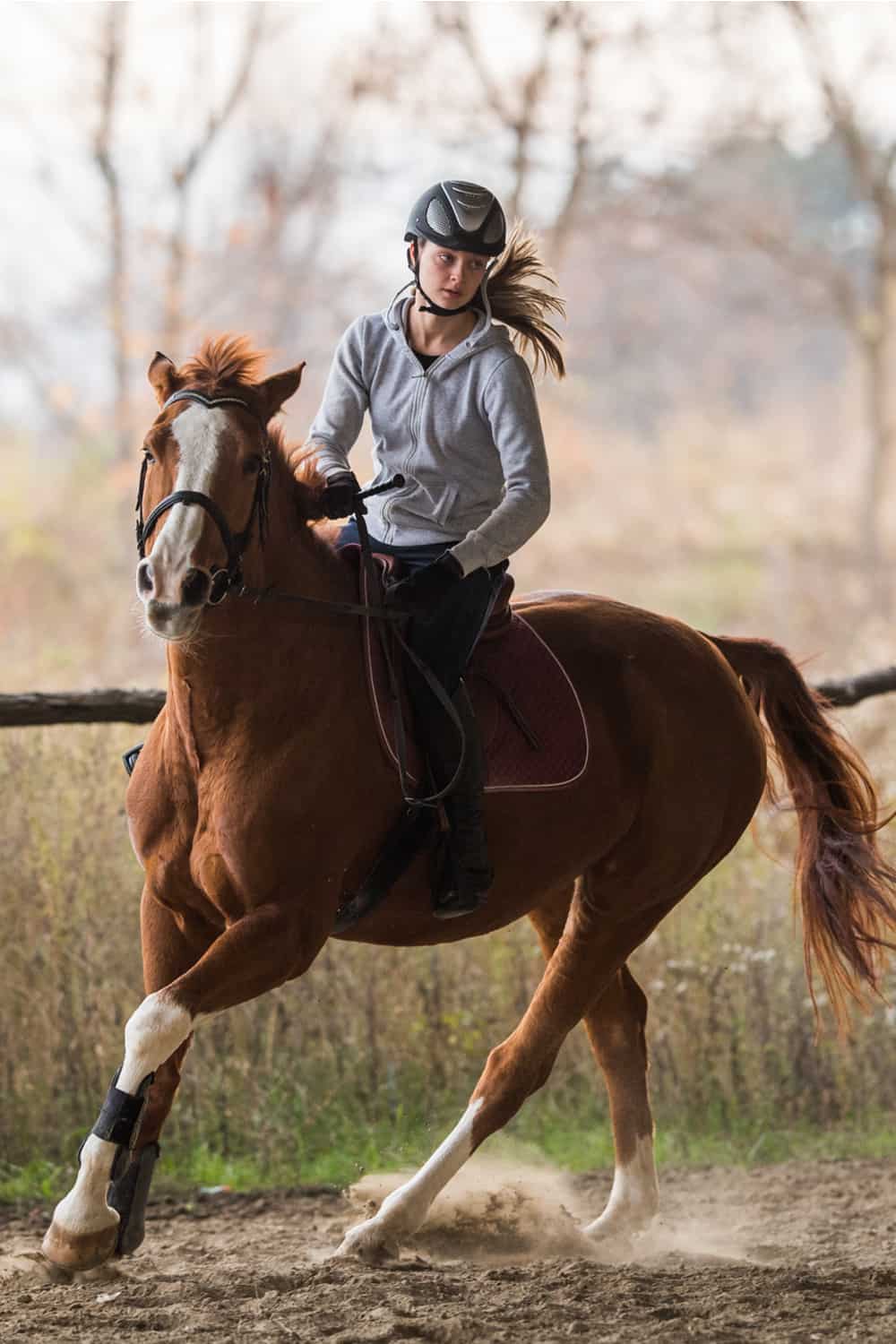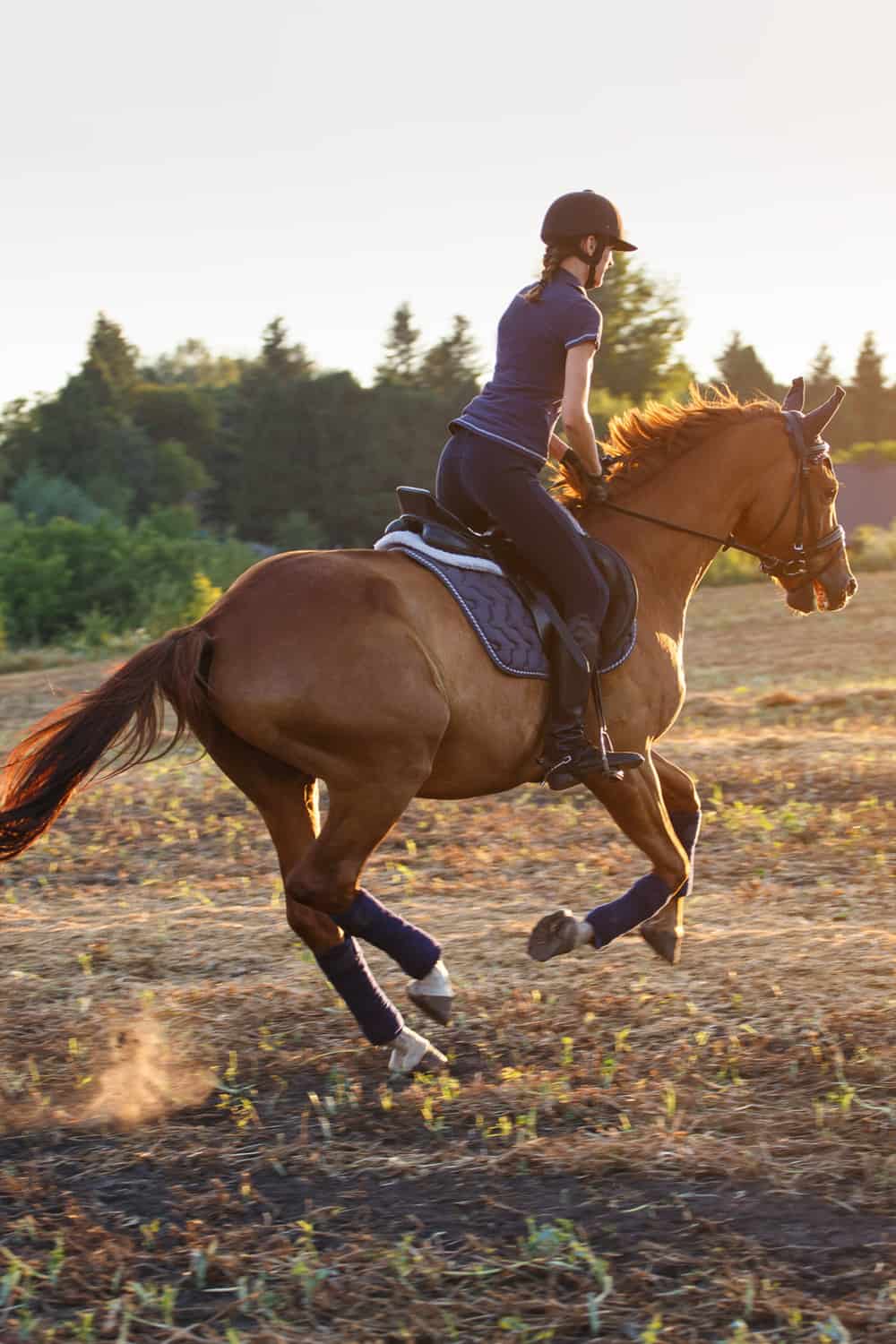Nothing is more exciting than watching an experienced rider synchronize with his horse’s movement. Sometimes it’s so compelling you could get carried away into thinking it’s pure magic. But would you like to learn how to trot on a horse? Of course, it’s challenging to learn immediately, but after some time, your brain and horse learn, and in a short while, you already achieve harmony.
So, which is the best way to learn how to trot on a horse? Stay level with your horse’s shoulder. Look ahead straight through your horse’s ears. Ask your horse to start trotting. Hold the reins or lead rope with little slack. Keep the neck straight. Now, walk away and back before you ask the horse to trot. The horse should move forward and pay attention to your commands.
You train your horse to trot for the judge in a show class or to the veterinarian. When the horse trots correctly, it gives your vet or judges a good picture of your horse, and they can analyze from there.
What is trotting on a horse?
Which Horses to Trot
Just make sure you are trotting on a healthy mature horse. Riding horses must be strong, energetic, and agile. The agility and musculature of a horse determine how good it is for trotting. Most modern breeds of horses are aimed at performing in demanding sports.
- Size: The best horse for trotting should be about 16 and 19 hands tall. Your weight should be just about a fifth of that of the horse.
- Age: Do not ride some horses until their body is mature enough to carry you. If you ride a foal, you can end up hurting its back and legs. While some people start riding their horses as young as two years old, experts warn that a horse is not mature enough for riding until six years of age.
- Breed: Although there are more than 300 breeds, the best species to ride are the Arabian horses, thoroughbred, quarter horse, draft breeds, and Tennessee Walker.
- Pregnancy: Itd be so mean to ride a pregnant horse that is almost giving birth. At least, give it time to carry the weight of the pregnancy and bring forth a new equine life.
How to Trot on a Horse (Step By Step)
Step 1. Wear Appropriate Safety Gear
Although horse riding is fun, you have to take all safety precautions. Before you even think of riding a horse, make sure to have all the safety gear on. Do not be deceived into setting your foot into the stir-up or hop on without taking care of your health.
Always wear a helmet certified for equestrians. It doesn’t matter whether you are riding western or English, but a helmet can save your life. Yes, your broken bones can heal but injuring your head could result in death.
Then, wear the proper horse riding boots. Get a pair of boots that is good enough for your riding experience. Of course, horse riding boots are not the most exquisite you find, but they have a high heel and are not bulky. It’s dangerous to ride in flat sole-boots or sneakers. The heel instruction ensures that you are always both strapped.
Step 2. Learn Basic Horseriding
Then, you have to understand the primary ways of riding a horse to stay alert during the entire trotting period. Of course, riding can be too much fun, and if you’re not careful, you could get carried away or distracted.
But remember that the animal can act unpredictably. Keep your eyes and mind on the process.
Before you jump onto the saddle and start trotting your horse, make sure to understand the basics of riding a horse. The best way to do this is to seek the specialization of an instructor. A good trotting instructor will take it through the skills you need to trot on a horse.
Step 3.Use a lunge line if you’re a beginner
First, start by trotting on your horse on a lunge line. The lunge line is a rope that clips the breed of the horse and is held by your instructor. A horse on the lunge line will walk onto the circle.
Trotting the horse on the lunge line keeps it under control on the same path. The instructions you give to a horse to make it trot are just the same as you do when you want it to work. Use the inside of your leg that faces the center of your trotting arena.
Step 4. Squeeze your legs appropriately
When riding your horse, squeeze your legs gently to ask the horse to trot. If the horse continues walking, bump gently with your heels.
If you want to steady yourself, don’t be shy of holding onto the horn or the saddle. Whether using the Western or English saddle, you can attach a grab strap to hold onto. Such straps give additional security, especially when you are starting.
Although trotting might feel awkward when you get started, you don’t feel frustrated but keep going. Do not squeeze your legs or pull the reins to hold on, even if that’s what your instinct clicks.
Remember, squeezing can mean different commands to the horse, and you don’t want him to act weird. Things are far more manageable when you relax.
Step 5. Sink into the saddle
Sink into the saddle and allow your legs to hang long and quiet.
The mouth of your horse can get hurt if you pull the reins to balance. If you have to put yourself steady, use your grab strap or the sudden, especially if you are riding Western Style.
Maintain a forward look in the horse’s ears while sitting up tall.
Step 6. Maintain absolute patience
Be patient enough to learn how to trot on the horse. Start with a few steps and then two more extended trotting periods. Coordination is critical, and although it might be challenging at first, you will soon practice and be experienced.
Step 7. Say verbal commands and reward your horse
Tell the horse to do things verbally. The horse will soon learn your voice and will obey your commands. Remember to be consistent and the reward the horse for successful commands. Here the secret is to have several treats for your horse and reward it everytime it makes progress.
Common Horse Trotting Problems And How To Troubleshoot Them
The horse is a living creature and can act unpredictably. When training your horse to trot up, you could face a few challenges. Here is how to troubleshoot the common horse trotting problems.
When the horse is fast and too sprightly
One of the challenges of teaching your horse how to trot is when he’s too keen to go. You are trying hard to keep him in contact with the lead rope and using the reins to control him, and therefore the quality of his trot doesn’t prove to be the best.
So, take time to train groundwork and attention, especially by changing the speed and direction. Teach the horse how to be attentive while sticking to your side. Of course, you need short breaks and bursts of jogging alongside you on a loose rein. Eventually, it will become boring for him, but these breaks will make it a little exciting.
If dealing with a too excited horse isn’t working for you, make sure to practice trotting up when he’s a little tired. Keep the cute trot quiet and do it only for a few steps before you come back to work.
In case the horse tries to get carried away, reduce the trot time. Practice the truth until the horse can naturally do it regularly in a relaxed manner. Also, help the horse relax by using a soothing voice.
Horse losing concentration and unable to follow commands
If your horse is losing focus you need to invest in groundwork. Learn to change pace and direction and never let us know what to expect. This way, the horse has to pay attention to your commands and listen attentively.
So, instead of the horse doing its own thing, it will always try to listen to you. Whatever you do, the horse will follow you politely. And, in case the horse gets carried away or loses focus when you’re practicing, trot him back up a few steps.
Train your horse to respond accurately to your voice commands. Again use the lungeing technique to help them practice your voice commands.
Horse refusing to move forward
During learning, it’s typical for the horse not to want to make forward movement. One important tip is to make sure you don’t look back at him; otherwise, it will make him feel intimidated.
Instead, take a schooling whip with you on your outside hand and tap his side to backup commands. Having a harness makes it easy to control your horse better.
FAQ
How do I sit on the trot without bouncing?
It’s exciting to watch experienced riders trot on their horses without bouncing. Sometimes it even looks more like magic than real. But after you have tried your first few trots, it’s unimaginable to tell how experienced riders do it. Do they have thighs of steel, or does the saddle seat have velcro material?
But, the secret to sitting on the trot without unnecessary bouncing is in your experience. You just have to practice a lot using the tips below.
Relax and don’t tense up. Imagine walking with a glass of water in your hands, and you don’t want to spill it over and apply the same relaxed mood for trotting.
Do not let your legs grip hard.
Relax your legs extended and quiet, and put the weight on your heels.
Then, learn to coordinate your weight and hands while seated on the saddle.
How should I train my horse for trotting?
Anytime you’re training your horse to trot up, make sure that he understands your voice. When a horse responds to your voice commands, you can instruct them even without any physical contact.
Pulling the reins and lead rope quickly alters the head carriage. So, you can give commands such as trottor whoa. Use the lead rope and other signals that helped the horse connect between the word and the command.
After some time, the horse will get used to your commands and will not need the other signals. So, you can start phasing all these signals away over time, and you’ll be left with the voice instructions.
